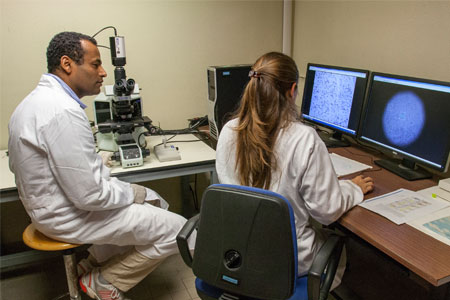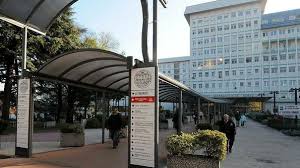- Autori:
-
Cimmino, Flora; Pezone, Lucia; Avitabile, Marianna; Acierno, Giovanni; Andolfo, Immacolata; Capasso, Mario; Iolascon, Achille
- Titolo:
-
Inhibition of hypoxia inducible factors combined with all-trans retinoic acid treatment enhances glial transdifferentiation of neuroblastoma cells
- Anno:
-
2015
- Tipologia prodotto:
-
Articolo in Rivista
- Tipologia ANVUR:
- Articolo su rivista
- Lingua:
-
Inglese
- Formato:
-
A Stampa
- Referee:
-
No
- Nome rivista:
- SCIENTIFIC REPORTS
- ISSN Rivista:
- 2045-2322
- N° Volume:
-
5
- Intervallo pagine:
-
11158-11172
- Codice PMID:
-
26057707
- Parole chiave:
-
neuroblastoma, hypoxia, retinoic acid
- Breve descrizione dei contenuti:
- Neuroblastoma (NBL) is a heterogeneous tumor characterized by a wide range of clinical manifestations. A high tumor cell differentiation grade correlates to a favorable stage and positive outcome. Expression of the hypoxia inducible factors HIF1-± (HIF1A gene) and HIF2-± (EPAS1 gene) and/or hypoxia-regulated pathways has been shown to promote the undifferentiated phenotype of NBL cells. Our hypothesis is that HIF1A and EPAS1 expression represent one of the mechanisms responsible for the lack of responsiveness of NBL to differentiation therapy. Clinically, high levels of HIF1A and EPAS1 expression were associated with inferior survival in two NBL microarray datasets, and patient subgroups with lower expression of HIF1A and EPAS1 showed significant enrichment of pathways related to neuronal differentiation. In NBL cell lines, the combination of all-trans retinoic acid (ATRA) with HIF1A or EPAS1 silencing led to an acquired glial-cell phenotype and enhanced expression of glial-cell differentiation markers. Furthermore, HIF1A or EPAS1 silencing might promote cell senescence independent of ATRA treatment. Taken together, our data suggest that HIF inhibition coupled with ATRA treatment promotes differentiation into a more benign phenotype and cell senescence in vitro. These findings open the way for additional lines of attack in the treatment of NBL minimal residue disease.
- Id prodotto:
-
91476
- Handle IRIS:
-
11562/938470
- depositato il:
-
5 aprile 2016
- ultima modifica:
-
2 novembre 2016
- Citazione bibliografica:
-
Cimmino, Flora; Pezone, Lucia; Avitabile, Marianna; Acierno, Giovanni; Andolfo, Immacolata; Capasso, Mario; Iolascon, Achille,
Inhibition of hypoxia inducible factors combined with all-trans retinoic acid treatment enhances glial transdifferentiation of neuroblastoma cells
«SCIENTIFIC REPORTS»
, vol.
5
,
2015
,
pp. 11158-11172
Consulta la scheda completa presente nel
repository istituzionale della Ricerca di Ateneo 








